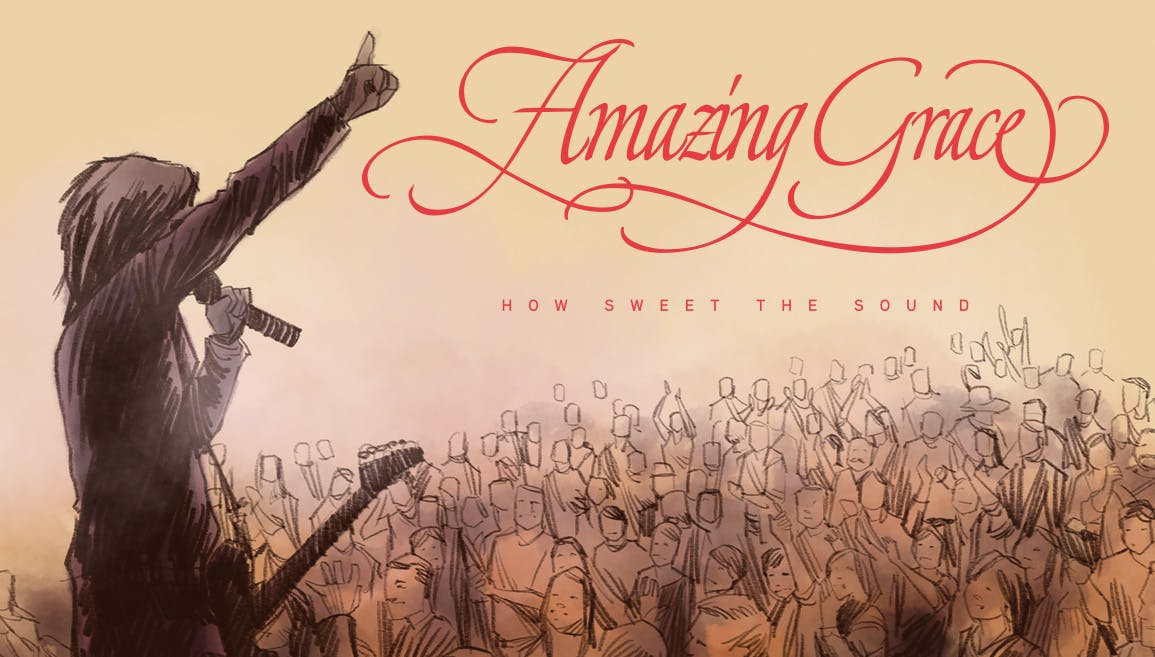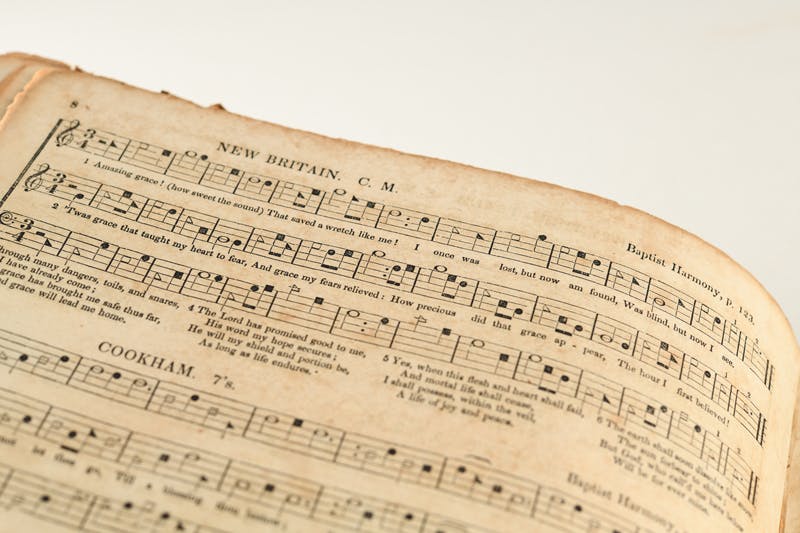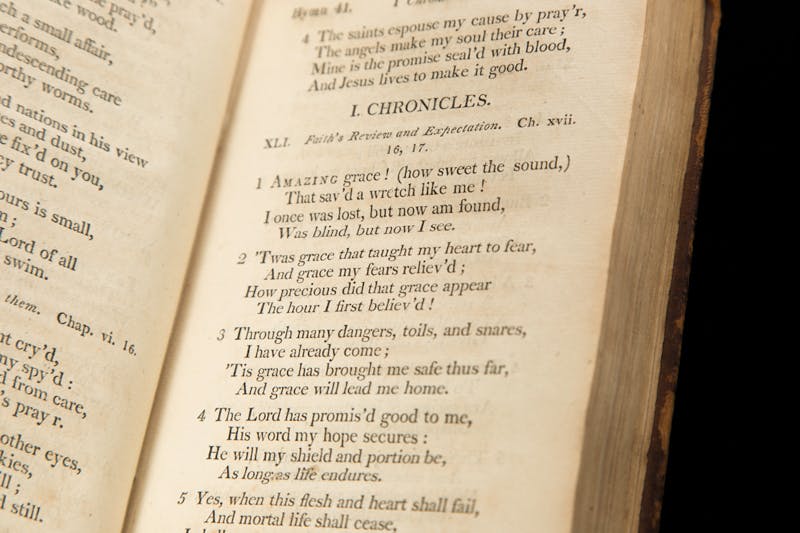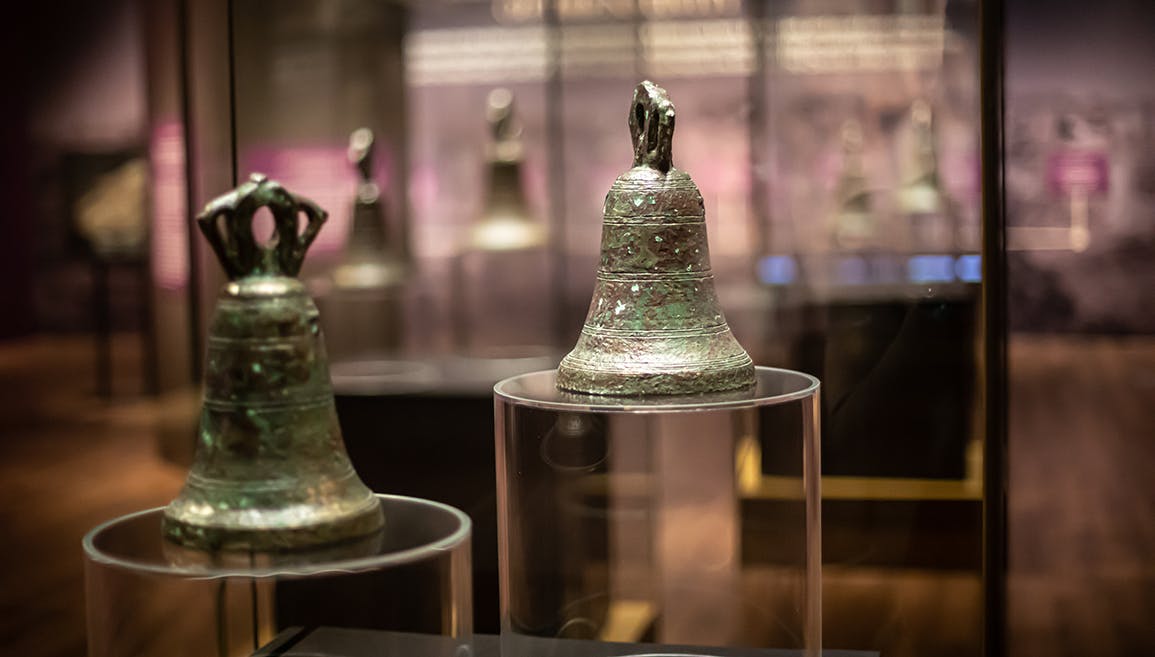Celebrating 250 Years of Amazing Grace

It was January 1, 1773. John Newton led his congregation down the road from the parish church in Olney, England, to Lord Dartmouth’s Great Hall to sing “new” music not traditionally allowed by the Anglican Church. Newton loved to write hymns and poetry, and the hymn he wrote for this day was special. It spoke of his conversion, of his self-proclaimed wretchedness, and of the saving power of God’s grace. Since then, the words of “Amazing Grace” have struck a chord with millions across cultures and generations, and its popularity has never wavered.
In November 2017, when Museum of the Bible opened to the public, several temporary exhibitions were curated to highlight specific stories related to the Bible. One of those stories was the history and impact of the song “Amazing Grace,” a song that has endured and empowered generations. The exhibition focused on three main themes: the story of the hymn’s author, John Newton; the creation and adjustment of the melody; and the hymn’s explosion in popularity over the past one hundred years. The exhibition also highlighted moments where the song intertwined with historical events—the slave trade, the anti-slavery movement, segregation in America, and the civil rights movement—to show how the words of this enduring song have been used and adapted by different communities for different circumstances.
The exhibition featured first editions of the books and hymns that inspired John Newton and letters between him and friends like William Cowper and William Wilberforce. It also featured editions of every major songbook that included “Amazing Grace” in some form and dozens of albums and recordings featuring the song.

Figure 1: Songbooks on display at the exhibit at Museum of the Bible, Amazing Grace: How Sweet the Sound. Image © Museum of the Bible, 2017. All rights reserved.
The inaugural run displayed items from several lenders—including Emory University, the Church Mission Society in Oxford, the Cowper and Newton Museum at Olney, Virginia Theological Seminary, and the Library of Congress—as well as numerous items from personal collectors wishing to contribute to the exhibition. The exhibition was a success, but another important milestone in the song’s history lay just over the horizon.
January 1, 2023, is the 250th anniversary of the first time “Amazing Grace” was ever sung. In celebration, Museum of the Bible has launched an online exhibit today based on the 2017 exhibit at the museum. We invite you to join us in this celebration by visiting the online exhibit and learning more about the song, its author, and its history. Explore “Amazing Grace” as the exhibit leads you through its history and shows images of several hymnals that include the song, some of which are first editions. Enjoy a timeline of some of the most pivotal moments in the song’s life and see how each verse of the song corresponds to a part of Newton’s New Year’s Day sermon. Guests can also listen to different historical adaptations of the song through our jukebox feature, experiencing the many verses and tunes that have been part of the hymn.

Figure 2: "Amazing Grace" set to the tune of "NEW BRITAIN," from the hymnbook Southern Harmony. PBK.004784. Image © Museum of the Bible, 2017. All rights reserved.
You can even see and read John Newton’s sermon notes for the New Year’s sermon he wrote “Amazing Grace” to accompany. However you wish to celebrate the hymn, we hope you’ll stop by and enjoy our online exhibit.
This Sunday, “Amazing Grace” will have been sung for 250 years. Why? Perhaps it is the message in the words, an outpouring of humility and redemption, that people respond to. Perhaps it is the theme of deliverance from bondage, be it internal or external, that comforts those in times of trial. Perhaps it is simply the familiarity of the tune, and of the words, that connects people to one another as they sing. Regardless of the individual reason, “Amazing Grace” is one of the most recognized songs in the world, bringing people together from all walks of life. While our diversity is illustrated in the many adaptations of the song, our humanity is illustrated in the unifying message of this beloved tune.

Figure 3: "Amazing Grace" in the hymnbook Olney Hymns. PBK.000611. Image © Museum of the Bible, 2017. All rights reserved.
Join us in celebrating the history of “Amazing Grace,” the story of how the witness-in-verse of one man’s personal redemption soared beyond his time and place to find an unending, universal life of its own. It is the journey “Amazing Grace” has taken from the pen of an eighteenth-century minister to becoming a modern pop-culture phenomenon—and you can experience it all in the comfort of your own home.
By Amy Van Dyke, Lead Curator of Art and Exhibitions


